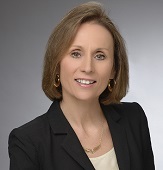BOLT Solutions Inc. is the leading provider of digital distribution solutions to the P&C insurance industry. Below is our interview with Kathleen Garlasco, executive vice president of marketing, from BOLT Solutions:

Q: Kathleen, could you tell us something more about the BOLT Platform™?
A: Our goal is to help insurers transform the way they sell and market their products by connecting carriers and their agents directly to consumers and small business owners. The BOLT Platform™ works with existing infrastructure and provides a single interface that connects seamlessly with back-office systems. The platform also expands carrier reach through a vast market network of new products. Insurers gain the ability to bundle their offerings with those from other carriers, positioning them to meet all of the customer’s needs without underwriting additional risk. The BOLT Platform, delivers the optimized solutions and ideal experience customers expect today.
Q: You’ve recently announced partnership with LexisNexis Risk Solutions; could you tell us something more?
A: Working together with LexisNexis Risk Solutions, we are simplifying and expediting the consumer and agent quoting process to improve quote-to-completion rates.
BOLT is leveraging solutions from LexisNexis, such as LexisNexis® Data Prefill, which provides consumers’ driver’s license numbers, VINs and more, to easily complete information fields in the BOLT Platform’s online automobile insurance application. While most consumers shopping for auto coverage use direct to consumer (D2C) channels for quoting, only a small percentage of those quotes turn into new business. Streamlining the quote-to-issuance process with application pre-fill capabilities helps to improve the consumer experience, increasing conversion rates and in turn, driving business growth.
 Recommended: Accelo Helps Small Businesses Be More Profitable By Automating Service Operations
Recommended: Accelo Helps Small Businesses Be More Profitable By Automating Service Operations
Q: What is the difference between being multi-channel and being omni-channel?
A: Both multi-channel and omni-channel are based on the same premise: providing multiple channels of engagement for consumers to use when quoting and purchasing coverage or interacting with insurers. The goal is to give consumers options, so they can use the channel that is most convenient in the moment. We know that consumers are already moving across channels as they research, quote and buy insurance, and that is where the differences between multi-channel and omni-channel come in.
Multi-channel engagement provides consumers with channel choice, but due to the disconnected nature of those channels, doesn’t always result in a consistent experience. For instance, a consumer may start a quote online, but then have questions about the coverage. To answer those questions, they move to a consumer-facing call center to speak to an agent. Since the agent has no visibility into digital channels, they have to ask the consumer to provide information that was already entered online. Consumer frustration ensues, resulting in decreased satisfaction and conversions.
On the other hand, omni-channel engagement provides a consistent cross channel experience, but requires insurers to unite product silos to gain not only a 360-degree view of the customer, but also a single access point to customer data. Omni-channel capabilities mean that a consumer can pick up in a new channel exactly where they left off in another, improving satisfaction and conversions.
Q: Do you think that chatbots and AI will revolutionize the insurance industry and how?
A: Chatbots and artificial intelligence are interesting tools, however they will not, in and of themselves, revolutionize the insurance industry. There are a number of different trends surrounding consumer engagement right now. One driving influence is the need for greater personalization in insurance. Through extensive research, Bain has discovered that more frequent and personalized interactions with insurers generate greater customer loyalty. The impersonal nature of AI and chatbots could work against insurers as they seek to retain customers, if other more personal channels of engagement aren’t available and easy to use.
Then there is the issue of trust, because 72% of consumers are not comfortable making an insurance purchase through a chatbot. Our feeling is that AI and chatbots are important channels for insurers to offer, but by themselves, will not revolutionize the industry. Insurers will get more value from incorporating them into an omni-channel strategy rather than banking on the capabilities as stand-alone solutions.
 Recommended: Analogix Drives Performance In HMD Applications Through Innovative Low-Power DP To MIPI Converters
Recommended: Analogix Drives Performance In HMD Applications Through Innovative Low-Power DP To MIPI Converters
Q: What is BOLT’s vision?
A: BOLT’s vision is to improve the way consumers buy and insurers sell insurance, generating a more customer-friendly way of shopping by empowering insurers with channel and product choice. With the BOLT Platform, insurers connect back-end systems to a single point of access, enabling true omni-channel engagement and opening doors to a multitude of markets and products that can be seamlessly bundled with carriers’ own offerings to meet more of the customer’s needs, more often.
Activate Social Media:


